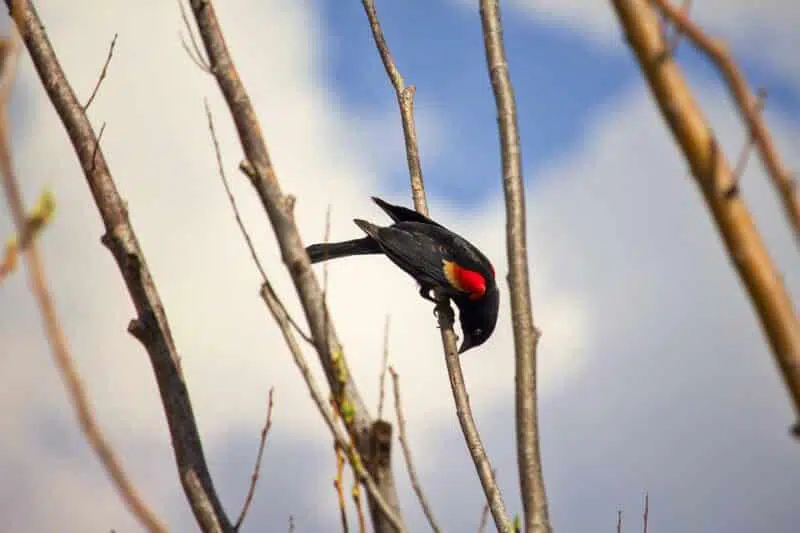There are many animals and wildlife in Mississippi. The Mississippi province comprises various scenes including woods, wetlands, boundary islands, grasslands, and beachfront rises. With such conditions, it’s unsurprising that Mississippi is home to various kinds of natural life.
This southern state is home to the north of 84 types of reptiles and 426 or more types of birds. Also, more than 120 types of fish live in the Mississippi River.

Not many of Mississippi’s most impressive wild creatures incorporate American crocodiles, Mississippi kites, armadillos, bottlenose dolphins, southern flying squirrels, muskrats, and kingsnakes. Touring the different scenes in Mississippi offers guests the chance to see various wild creatures.
The wetlands of Mississippi are home to numerous extraordinary wild animals. Some of the reptiles incorporate the Mississippi green water snake, Mississippi mud turtle, American crocodile, and the eastern mud turtle.
Birds, such as the wood stork, ruddy egret, and the swallow-followed kite with its weirdly parted or forked tail, also live in Mississippi’s wetlands. Rodents, such as the bog rice rodent and nutria, also live in the swamps. Red foxes, wild hoards, and marsh bunnies are additionally found in this living space.
Click below to jump to any section on animals in Mississippi:
All About Wildlife in Mississippi
In the woodlands of Mississippi, guests will probably track down warm-blooded creatures like the southern flying squirrel, white-followed deer, raccoons, beavers, and skunks. The northern ridiculing bird, the red-bellied woodpecker, chipping sparrow, indigo hitting, and the white-breasted nuthatch are only some of the birds that make their home in the timberlands of this state.
Regarding bats in Mississippi’s woods, guests might notice the enormous earthy-colored bat, the Brazilian free-followed bat, the dim bat, and the Seminole bat, to give some examples. Several birds come here during the summer.
The Mississippi river, floodplains, and bluffs provide food and a safe house for moving birds, incredible warm-blooded creatures, and unique fish. Among 120 different types of fish make a home in the water stream. Deer, otters, beaver, coyotes, muskrats, and other well-evolved creatures live along the stream’s banks. The National Park Service regularly leads to assess animals and famous places.
Fox Squirrel
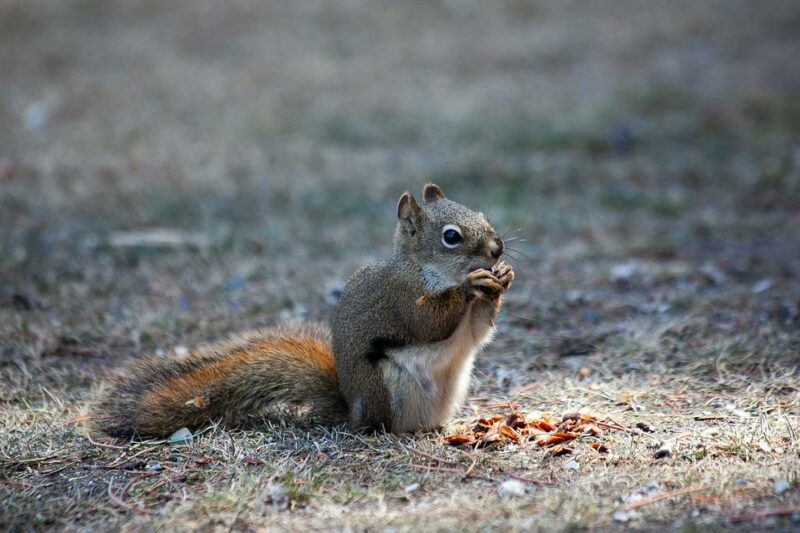
The squirrel’s all-out length is estimated to be 20 to 30 inches, with a body length of 10 to 15 inches and a comparable tail length. They weigh around 1.0 to 2.5 pounds.
The creature’s chest area is brown-die in many regions with a regular caramel-orange underside. At the same time, in the east, for example, the Appalachians, they are more strikingly brown and dark with white on their faces and tails. In the south, they have uniform dark coats.
To assist with climbing, the squirrels have sharp paws, created extensors of digits and flexors of lower arms, and stomach muscular structure. Fox squirrels have superb vision, hearing, and smell. They often rummage on the ground a few hundred meters from the closest woodlot.
Fox squirrels additionally usually possess woods edge living space. Food propensities for fox squirrels rely to a great extent upon the geographic area. As a general rule, fox squirrel food sources incorporate poles, tree buds, bugs, tubers, bulbs, roots, bird eggs, seeds of pines and spring-fruiting trees, and parasites.
They eat corn, soybeans, oats, and organic products.
Where can one find Fox Squirrels in Mississippi?
Fox squirrels live in open woods with little understory vegetation; they are not found in area with thick undergrowth. Their ideal living space is dispersed pines and oaks.
Groundhog
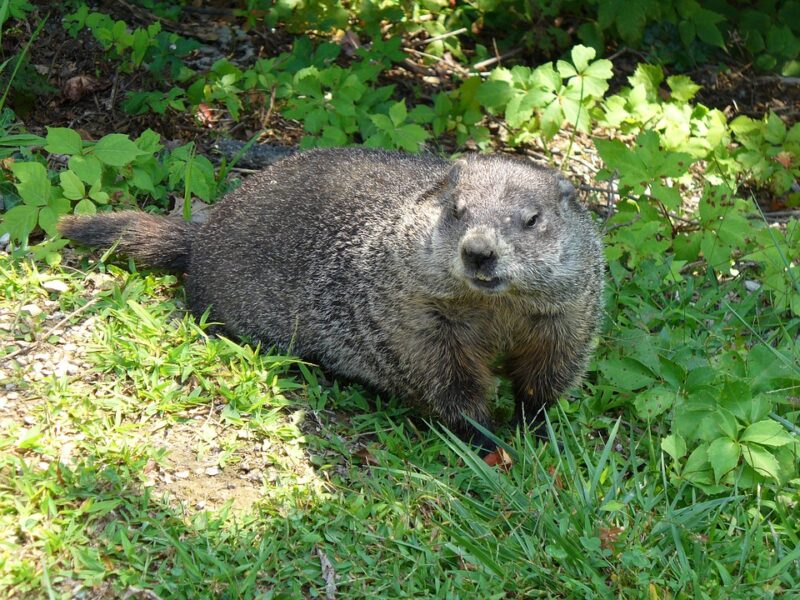
These animals in Mississippi bold-bodied rat weighs up to 6 kg (13 pounds) and has a body length of up to 50 cm (around 20 inches) and a short, hairy tail up to 18 cm (7 inches) long. They have thick, brown fur and buff chests.
Found from the eastern and focal United States toward the north across Canada and into Alaska, they most generally live along woodland edges adjoining meadows, open fields, streets, and streams. Yet, they are periodically additionally experienced in thick timberlands. The groundhog is lone besides in the spring when a litter of four to six youthful is born.
Groundhogs dig profound and broad tunnel networks, but are also good swimmers and climbers. They are active during the day and evenings, eating grasses, other green plants, and the bark and buds of trees.
Furthermore, they eat a lot in summer and late summer, gaining fat stores for the winter. It curls into a ball to hibernate, and its internal heat level drops to that of the surrounding temperature.
Where can one find Groundhog in Mississippi?
Knolls, woodlots, grasslands, pastures, hedgerows, static fields, parks, and rural areas are where one can find groundhogs.
Red Winged Blackbird
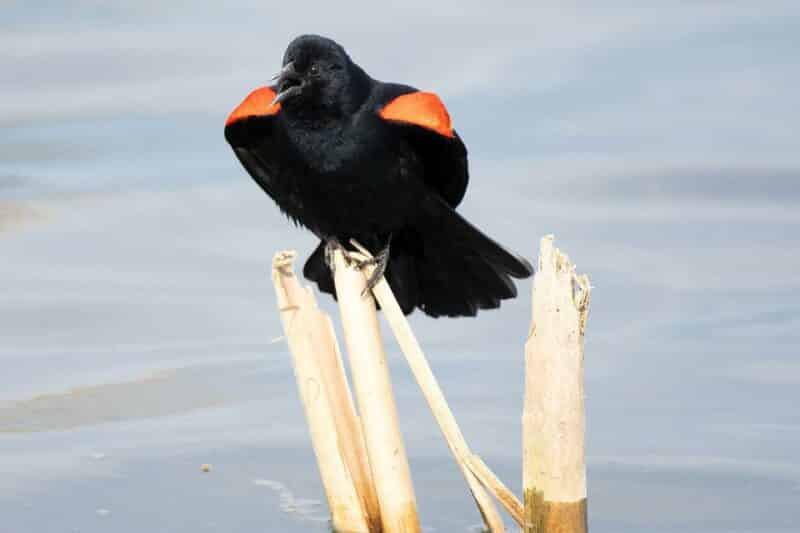
The most popular icterid of this name is the red-winged blackbird going from Canada toward the West Indies and Central America. It is 20 cm long, and red shoulder patches set off the male’s dark plumages.
Icterids in North America include the corroded blackbird and Brewer’s blackbird. The red-breasted blackbird is located around South America. They scavenge while strolling on the ground as well as in bushes and trees.
They live in groups and frequently consume bugs, berries and seeds, including scarabs, caterpillars, grasshoppers, insects, millipedes, and snails.
The male roosts on a high tail with feathers lightened out and tail somewhat spread, lifts the driving edge of the wing so red shoulder patches are noticeable and sings. He sings in sluggish, shuddering flight.
A male frequently has more than one mate. They live in swamps, hedges near water, or thick grass in fields. The female makes the nest out of grass, reeds, leaves, rootlets, fixed with fine grass.
Where can one find a Red-winged blackbird in Mississippi?
They are primarily found in marshes and other wet areas.
Red-eared Slider
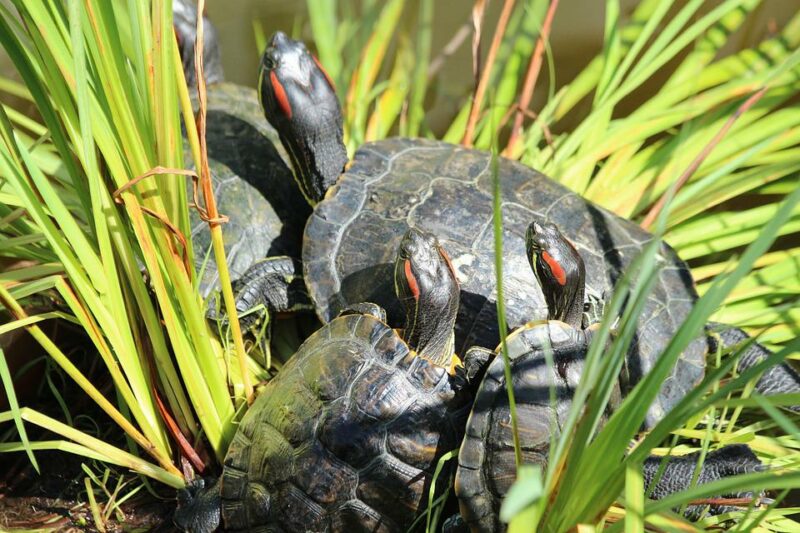
A grown-up red-eared slider turtle is about 12.5-28 cm long. The red-eared-eared slider has a particular, expansive red or orange stripe behind each eye, while thin yellow lines are found on the remaining part of the animal’s head and legs.
The stiff upper shell of the red-eared slider is dim green with yellow markings. The color of the large pad area is yellow for specific faint rings, scars, or whirls. A few red-eared sliders have dim shade coverings and hued markings, so they appear almost dark in variety.
Male red-eared slider turtles are more petite than female red sliders and have incredibly long hooks on their front feet. Red-eared slider turtle is omnivores and so has an omnivorous diet.
Adult red-eared sliders are herbivores, and baby red-eared sliders feed on frog eggs and other aquatic invertebrates. Animals in Mississippi are exceptionally adaptable and can easily tolerate rough waters, artificial canals, city parks, and lakes.
The red-eared slider may move around in the water and survive the cold winter hibernating season. When accessible natural surroundings are observed, the red-eared sliders can quickly colonize another area.
The female red-eared slider can lay 2-23 eggs, with hatchlings arising after 60-75 days. In the wild, the red-eared slider turtles are found to live for 30 years, but in pairs, they can live for as long as 75 years.
Where can one find a red-eared slider in Mississippi?
They are found in creeks, lakes, ponds, streams, swamps- or slow-flowing rivers.
Blue Catfish
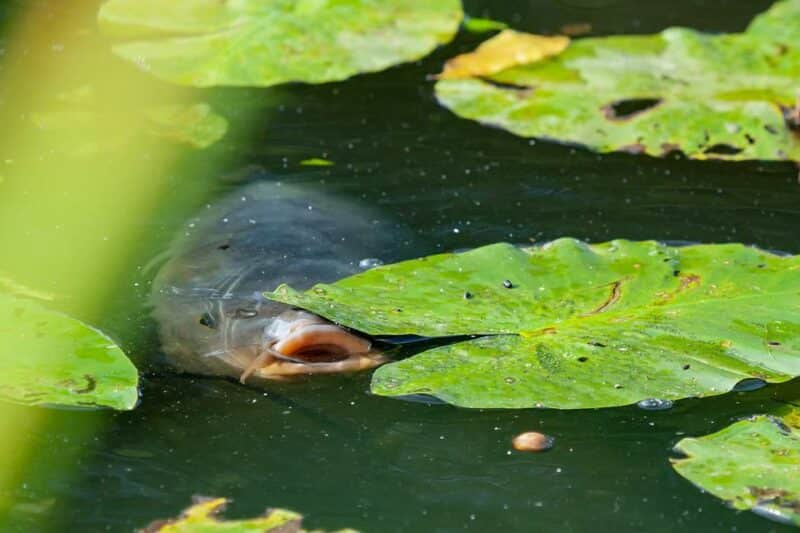
The blue catfish is a long fish with a level dorsal blade and a profoundly forked tail. Its smooth skin needs scales. It has a record blue body, a silver-white stomach, and four sets of dark, bristle-like barbels around its mouth. Grown-ups typically develop to be under two feet long, yet can be up to five feet and weigh more than.
Blue catfish are pioneering bottom dwellers. Their shifted diet incorporates worms, shellfish, little scavengers, mussels, crabs, bugs, frogs, and more modest fish, including other blue catfish. Be that as it may, their eating routine differs occasionally. In spring, summer, and fall, a considerable part of the blue catfish’s eating regimen comprises submerged vegetation. These animals in Mississippi can “taste” their environmental elements with tactile tissues on their barbels and skin, which they use to recognize and chase prey.
To avoid predation, youthful blue catfish will frequently chase around evening time, taking care of principal zooplankton and little sea-going insects. By all accounts, the producing conduct of blue catfish seems to be like that of channel catfish. Be that as it may, most blue catfish are not physically mature until they reach around 24 crawls long.
Like channel catfish, the blue catfish seeks after a fluctuated diet, yet it will generally fish throughout everyday life even though spineless creatures continue a significant piece of the eating routine; blue catfish as little as four crawls long have been known to consume fish.
Where can one find Blue catfish in Mississippi?
Blue catfish live in streams all over Mississippi. They will often move upstream in the late spring, looking for cooler temperatures, and downstream in the winter looking for warmer water.
Northern Mockingbird
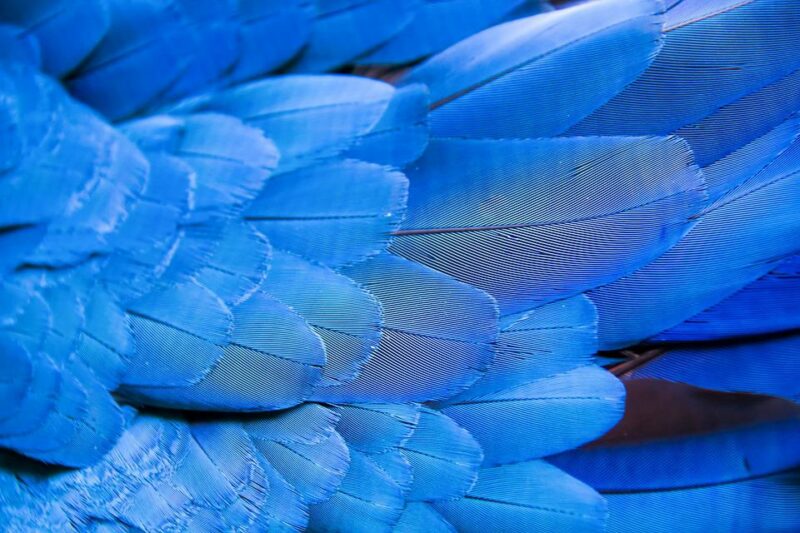
The northern mockingbird’s Latin name means “many-tongued imitate.” The birds learn and rehash the tunes of different species. An individual can learn up to 200 songs during their lifetime.
Notwithstanding birdsongs, northern mockingbirds rehash canine barks, instruments, and alarms. Northern mockingbirds are medium-sized warblers with dark brown body hues and a lighter underside. Their wings are adjusted with white patches on the upper and lower surfaces, which are apparent when the wings are outstretched. Males are larger than females.
The bird’s average wingspan is 12-14 inches. They typically eat bugs, organic products, and seeds. In the spring and summer, these birds feed a lot on bugs, particularly creepy crawlies, grasshoppers, caterpillars, insects, and wasps.
Unpaired males will sing 24 hours of the day during mating season, then show off his wings when a mate is near.
The pair might remain in a monogamous mating relationship over many reproducing seasons, or one male might mate with numerous females. The bird’s life expectancy in the wild is as long as eight years.
Where can one find mockingbirds in Mississippi?
They can be found in towns, areas near thickets, dense bushes, and roadsides.
Summary of Animals in Mississippi
If you enjoyed reading about the animals in Mississippi, check out animals in Manitoba and New Mexico next!
- Animals and Wildlife in Colorado - April 24, 2024
- Best Places to see Sloths - April 24, 2024
- Where to See Alligators in the Wild - April 24, 2024

